Prospect Park Faces ‘Many Seasons’ of Recovery After Brush Fire
After clearing and stabilizing the burned area, the Prospect Park Alliance will reforest it with native species.

A two-alarm fire burned through two acres and caused significant damage in Prospect Park on November 8. Photo via Prospect Park Alliance
By Kirstyn Brendlen, Brooklyn Paper
Days after a highly unusual brush fire broke out in Prospect Park, things seemed almost back to normal.
Brooklyn’s green lung was full of visitors, and on first glance, the two-acre stretch of the park’s Ravine, where the fire started on November 8, looked relatively unmarred.
On closer inspection, though, the hillside was full of burned logs and tree branches, and even the ground was scorched in some places. The fire was extinguished relatively quickly, and the damage was limited, said Morgan Monaco, president of the Prospect Park Alliance, but it’s a significant setback.
“It could have been a lot worse,” she said. “But the damage does include … burning to some of our older, more mature trees, and all of our forest’s ground cover.”
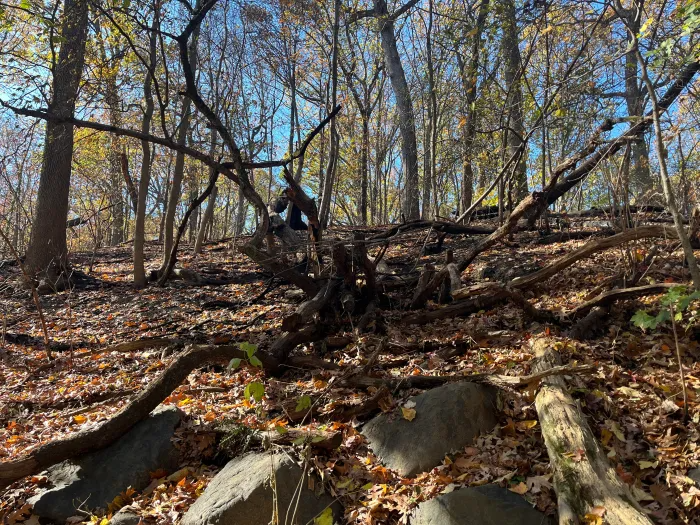
Healthy forests have multiple layers of vegetation, she said, including a layer of tiny, herbaceous plants and leaf litter on the forest floor, a “mid story” with larger shrubs and small trees, and the canopy, the upper layer made up of mature trees.
“Those three things to work in unison to make a healthy forest, and unfortunately, we lost a lot of our ground cover and a lot of our mid story,” Monaco said.
The first step toward recovery in the Ravine will be clearing out the burned debris, Monaco said, and stabilizing the area with wooden steps and soil fabric. The fire broke out on a steep slope, and the loss of plants and trees means soil erosion is likely.
Then, they’ll invest in a significant reforestation effort. It will take “many seasons” before the area is back to its pre-fire self, Monaco said.
“We take a lot of care to think about the right species, planting the right trees in the right locations, and making sure that we have a mix of species so that we have diversity,” Monaco explained. “Because, when threats happen, we want to make sure one tree or one species isn’t completely lost and we don’t have a forest anymore.”
Unprecedented drought brings unprecedented fires
Forest fires in New York City are nearly unprecedented. None have been recorded in Prospect Park in recent history, and while wildfires are part of the natural cycle in some parts of the country, they’re extremely uncommon in urban forests.
The November fire came days after Mayor Eric Adams declared a drought watch in New York City. The season was the driest fall on record in the city, impairing trees and other vegetation. While rains later in November have brought some relief, the city will need more than 4 inches of precipitation this month to return to average for the year.
Fires often accompany drought. The New York City Fire Department said it had extinguished “hundreds” of brush fires in late October and early November due to dry, windy conditions. Drought means lots of dry vegetation and stressed trees – perfect kindling for stray coals or embers from grills or even cigarette butts. The FDNY tackled 229 brush fires in the two weeks ended November 12, the department said, including 51 in Brooklyn.
On November 9, another small fire started in Prospect Park. The FDNY has maintained a presence there since Friday, and firefighters quickly extinguished the flames, according to the Alliance.
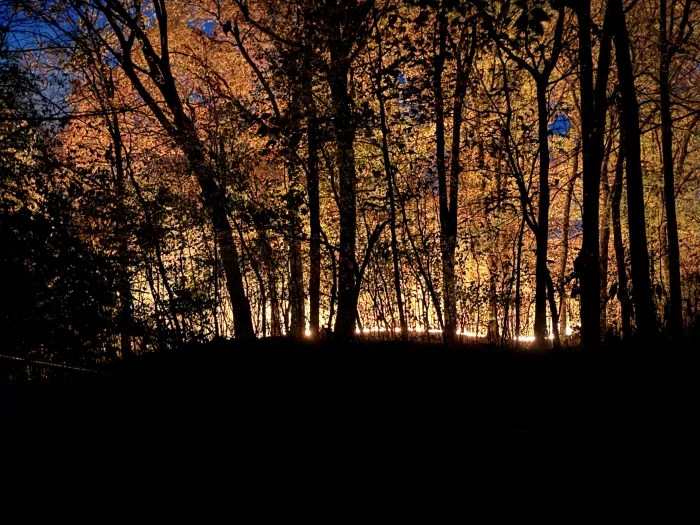
Officials are still investigating the cause of the November 8 blaze, which a passerby saw and reported to 911. Almost all wildfires are started by humans, according to the state’s Department of Environmental Conservation, caused by burning debris, smoking, and other reasons.
Neighbors have said there are homeless encampments near the scene of the fire, and the New York Post found burnt litter and campsite items, including grills, in the area — though Brooklyn Paper observed no debris on November 12.
Monaco said there are encampments in Prospect Park, and that the Alliance works with the city’s Department of Homeless Services and with the nonprofit Breaking Ground to reach out to people living in Prospect Park.
“They form relationships with folks over many seasons and periods, and people aren’t necessarily always in the same location, so it’s really not a one-size-fits-all solution to addressing a very complicated problem,” Monaco said. “But we’re grateful that the city has a response protocol in place to address encampments.”
Locals support the park, and worry about its future
Rebecca Hume, a birder who has lived in the area for over 15 years and visits the park regularly, said she was “devastated” when she heard about the fire.
“Having a green place like this has been absolutely vital for me,” she said. “It feels awful not to be able to protect a place this important.”
Wildfires in California and, more recently, Canada, make headlines every summer. But the eastern coast of the U.S. has largely been spared from that particular catastrophe.
“I think this was maybe not the way, we thought, in the city that we were first gonna experience [climate change], Hume said. “We think, like, oh yeah, fires happen other places and not here. It’s alarming, but it’s also like, what did we expect? This is what we’re doing to the world, it’s going to hit everyone.”
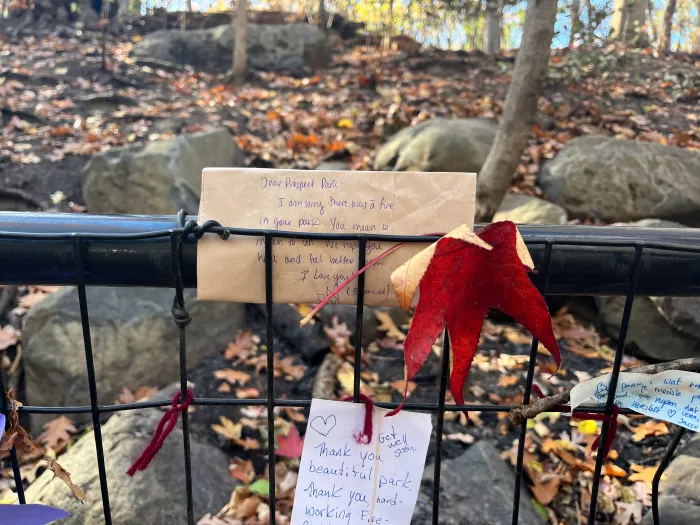
The park has received an outpouring of love and support since the fire, Monaco said. Visitors tied notes of support to the fence beside the burnt forest, with messages like “Ouch! Get better soon. Thank you FDNY,” and “You will persevere. Please keep protecting us, Prospect Park!”
Monaco asked supporters to donate to the recovery campaign online, and said that once the area is safe again, they’ll welcome volunteers to help with the replanting effort. For now, she urged Brooklynites to stay out of the area for their own safety.
Bruno Grandsard and Mercedes Sanchez, who have lived near the park for 25 years and walk in the park almost daily, checked out the damage for the first time a few days after the fire.
Sanchez said she felt “panicked” when she heard about the fire, but was comforted somewhat by the relative lack of visible damage.
But the fire, and the drought, are just another example of climate change in Brooklyn. Last fall, flooding devastated parts of Brooklyn and forced the Prospect Park Zoo to close for several months. This year, conditions are totally different.
“We’re lucky because here we have fire departments all around, and this could be extinguished pretty easily,” Grandsard said. “But what do you do when it’s in major forests? I don’t think we have a national, global plan for dealing with it.”
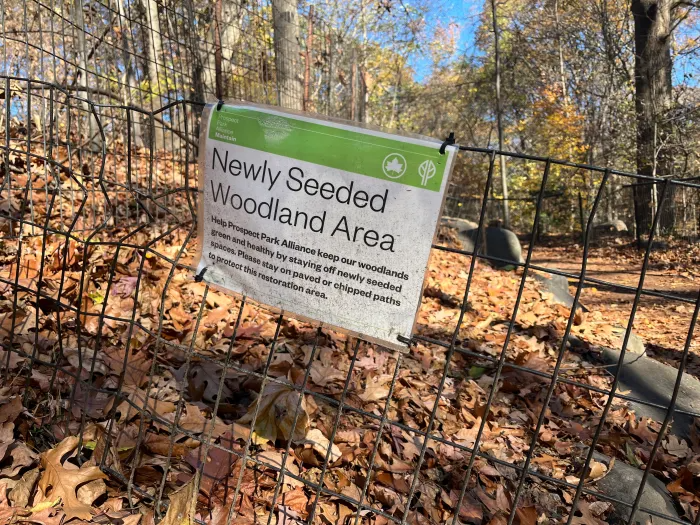
As for girding Prospect Park against climate change, the Alliance will need to prepare for more droughts in the future, Monaco said, mostly with its plantings. Native plants and trees help protect the forest against catastrophes like fires and floods, and leaders in different sections of the park are responsible for choosing which plants go where, depending on what’s needed.
Newly planted flora are watered regularly in the spring and fall to make sure they have a good chance at survival, Monaco said. Drought conditions strain those new plants, and require more human effort to keep them alive.
“We know there could be droughts like this in the future,” she said. “This is something we’ve got to start planning for, and make sure that we’re building into our seasonal planting plans … we’ll be much more thoughtful and cognizant of what to do when there is another mass incident like this to rebuild and recover.”
Editor’s note: A version of this story originally ran in Brooklyn Paper. Click here to see the original story.
Related Stories
- Light Rain Doesn’t End Drought Watch or Brush Fire Risk
- How Many People Did it Take to Plant a Tree in Prospect Park in 1867?
- How Litchfield Villa, the Picturesque Mansion of Prospect Park, Came to Be (Photos)
Email tips@brownstoner.com with further comments, questions or tips. Follow Brownstoner on X and Instagram, and like us on Facebook.








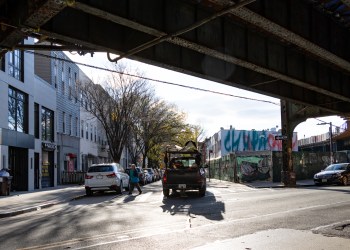
What's Your Take? Leave a Comment